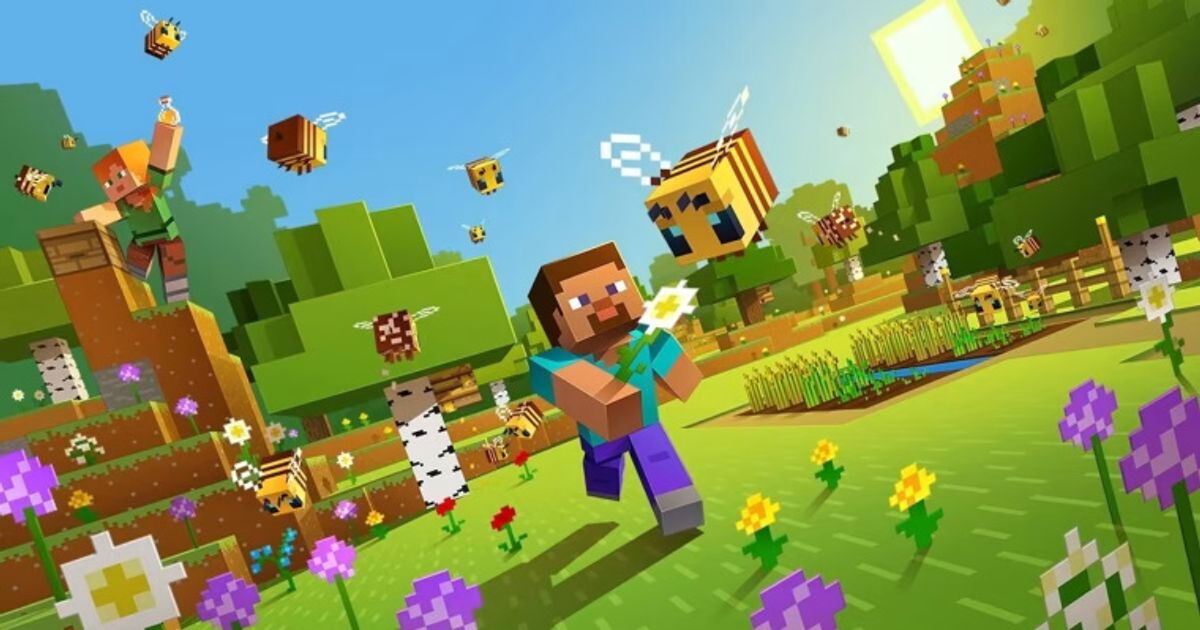Whether you play Minecraft Java or Minecraft Bedrock, regardless of whether it's survival mode or creative mode, there are tons of different farms you can build to make resource collection a lot easier while learning and manipulating the finer mechanics of the game. Oftentimes, this is a fun, challenging, and profitable in-game pursuit; however, farms work differently across the Java and Bedrock versions of Minecraft. In this article, we'll explain the major differences between Bedrock farms and Java farms and what you need to know about Minecraft farms in general.
Minecraft is Minecraft, for sure, but there are key differences between the two major versions of the game that spill over into not just farming but the core gameplay loop of Minecraft itself.
For example, a fundamental property of Redstone in Minecraft Java is something once thought to be a bug that was later confirmed to be a feature: Quasi-connectivity. This means in Minecraft Java pistons, dispensers, and droppers can be activated by anything that would activate the space directly above them.
It's a slightly confusing feature to explain through text, but what it boils down to is the simple fact that Redstone builds in Minecraft Java are much more flexible than those in Bedrock. This feature not making its way to Bedrock is one of the main reasons why Java is many people's preferred Minecraft version.
Related: tModLoader 1.4: Does Terraria 1.4 Support Mods?
This 'flexibility' doesn't just mean that farms have to be built a little bit differently on Bedrock than on Java, it means that many farm designs built specifically for Java cannot work in Bedrock and will instead need major design reworks to make them work, which it isn't always possible to do.
While many look at Java's many unique features as a reason to play that version over Bedrock, Bedrock also has unique features that change how farms work. One such feature is that Java does not have moveable tile entities. This means that you can't push an active furnace with a piston, for example.
Practically speaking, this means that rotating auto-smelter farms are possible in Bedrock, giving gamers a cool, efficient way to smelt through stuff in bulk. Java has auto-smelter farm designs, but this particular method of designing such a farm will not work on Java.
Related: Biggest Features of Minecraft 1.19: The Wild Update
Bedrock, in general, with the way it handles updates and its own launcher also usually pushes players to play the latest Minecraft version to a much greater extent than Java. In Java, updating to a major new release will always be a conscious choice.
This means that farms on Bedrock tend to be more temperamental than those on Java because while updates to both Java or Bedrock regularly break certain farms, since this update process is a lot more behind-the-scenes with Bedrock, many players simply load into their Bedrock world one day to find a farm not working.
Nonetheless, while Bedrock does have the reputation of giving players a lot less choice of what they can build in terms of farms, this isn't really the case anymore because of the updates to Bedrock that have slowly moved this version of the game toward's feature-parity with Java.
Related: Minecraft for Windows 10 & Minecraft RTX Performance Guide
There are a few kinds of farms that have big differences between the versions, often because of features like moveable tile entities or quasi-connectivity, but it's important to remember that the majority of farms in Java can be built in Bedrock.
XP farms and villager farms are some of the worst offenders when it comes to building farms across Bedrock and Java because they work significantly differently, and unfortunately, the Bedrock experience is strictly worse.
This may not seem like a big deal, it just being two types of farms, but XP farms and villager farms are the single two most important types of farms in Minecraft because you can get all the most powerful gear and weapons through villagers and with XP.
Related: How to Fix Minecraft Achievements Not Unlocking
Villagers, on Bedrock, pair with profession blocks unreliably: Sometimes it doesn't work, and often, a single profession block or stray villager within even a hundred blocks of your farm can mess the whole thing up. Manipulating villagers on Java isn't easy, either, and on Bedrock, if you understand the systems of the game, you can still build a wide variety of villager farms, but it's considerably more tedious in Bedrock.
Zero-tick XP farms, some of the most common XP farms that are easy to build and can be built early game, are also significantly more unreliable on Bedrock. Some XP farms have similar designs between Bedrock and Java, but zero-tick farms have had trouble on Bedrock for a long time. Depending on the particular version you're playing, you may be able to build a zero-tick XP farm on Bedrock, but even if it's possible, it's significantly less efficient than Java.
Explore new topics and discover content that's right for you!







